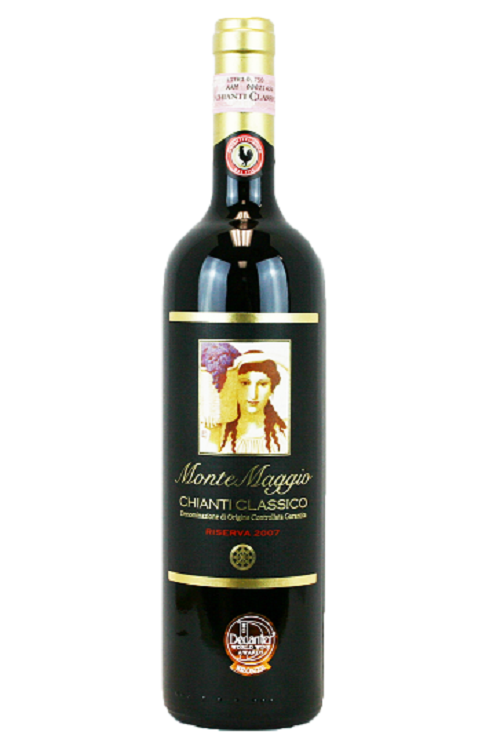Chianti has been with us for a great deal of time, at least 300 years. Like many wines that have existed for a long time, Chianti has seen its fortunes ebb and wane according to politics external factors such as the economy and political upheaval, and viticultural factors such as weather and disease. Earliest references to Chianti suggest it was once white. By the 18th century, Chianti was generally recognized as a red wine. In the mid-18th Century Baron Bettino Ricasoli, an Italian politician, developed a recipe for Chianti. The recipe called for 70% Sangiovese, 15% Canaiolo and 10% Malvasia, a white grape and 5% of other Tuscan red varieties. The recipe was later changed to allow the addition of another white wine grape; Trebbiano. In 1967, the Italian government introduced the Denominazione di Origine Controllata (DOC) regulation for Chianti based on the Barone Ricasoli formula; a blend of local red grapes based on Sangiovese and some 10%–30% of Malvasia and Trebbiano. DOC rules did not permit the production of Chianti containing 100% of Sangiovese!
After the devastation of WWII, money was scarce and growers tended to favor quantity over quality. Moreover, the cheaper wines were made with 30% of white Trebbiano, a relatively bland grape, particularly when over cropped. These wine were often bottled in a squat bottle enclosed in a wicker basket, called a fiasco. By all accounts, the wine was correctly named as the popularity of Chianti plummeted. Part of the reason for buying a fiasco of Chianti in those days was that the empty flask would make a romantic table setting when a candle was inserted into the neck! But as with many things in our world, which have reached a low ebb, a Chianti renaissance was underway. Committed producers with vision began to abandon DOC Chianti rules. They recognized the potential of their terroir and being convinced that DOC rules, far from providing a regulatory framework for quality, were a hindrance to quality, they began to abandon DOC rules! They wished to make wines without the compulsory addition of white grapes; they wished to make wines from 100% Sangiovese when conditions permitted it; they wished to experiment with international varieties such as Cabernet, Merlot and Syrah. Hence the advent of the so called “Super Tuscans.”
Why Super Tuscans? The quality minded producers abandoned the DOC rules. They could no longer call the wines Chianti. They wanted higher prices than average Chianti was attaining, prices commensurate with the significantly higher quality they were striving to produce. Also, by that time Chianti had such a bad reputation in certain quarters, that they did not want to call the wines Chianti! The official classifications for these new wines was Vino da Tavola, translating to “table wine” in English, a pejorative term in the minds of most Americans. But it worked, as quality and commitment in most endeavors do! The authorities took note and in 1996 began to change the rules to allow these higher quality wines to have an official quality status. In 1984 Chianti was awarded the highest level official status, that of DOCG. Today, DOCG Chianti rules provide producers with the possibility of making the very best wines. You will see the appellation DOCG Chianti Classico on many bottles. Classico refers to the classical area for production of Chianti, that region between the town of Florence and Sienna. These wines are easily identified as they bear a depiction of a “Gallo Nero” (Black Rooster) on the label. Though Chianti Classico is not specifically a quality statement, a great deal of top Chianti wines comes from the Classico region. Today, white wine grapes are no longer permitted in Chianti Classico. There is also a DOCG classification of Chianti Riserva. Chianti Riserva wines require additional aging before release and, in theory, are better wines than regular Chianti. There are other DOCG Chianti areas and the rules for making the wines vary slightly from Chianti region to region. In 2014 a new classification was introduced for Chianti Classico, that of DOCG Chianti Classico Gran Selezione. Gran Selezione wines are essentially the Chianti Classico equivalent of estate wines or Chateau wines in the Bodeaux sense. The grapes must be grown by the winery and the rules governing production are more stringent than for regular Chianti Classico.
Those of you who regularly read my articles know that I am a great lover of fine Tuscan Sangiovese. Sangiovese is a difficult grape and can disappoint but, when grown in the best terroirs, blessed with a fine vintage and dedicated, passionate, sensitive winemakers, Sangiovese, in my opinion, makes wines of subtlety, complexity, purity and finesse that make all other grapes appear pedestrian! Alas, though this now occurs more regularly, it is still not that common.
Want to try a beautiful Chianti Classico Riserva in its peak drinking window?
Click on the bottle below.
Selected by Peter Koff MW
.
Want to receive complimentary educational posts via email?
Please subscribe below.
Copyright © 2018 GreatWine2U.com. All rights reserved.


